Here’s my second installment on the Kiva Stories from the Field website as I serve as a Kiva Fellow in Bolivia. It’s been truly a gift to be working with such outstanding microcredit institutions here and to see how they succeed in very challenging environments.
Tag: Work
My Kiva Fellows Blog 2:
Borrower Verification in Bolivia: One Kiva Fellow’s First Days in the Field
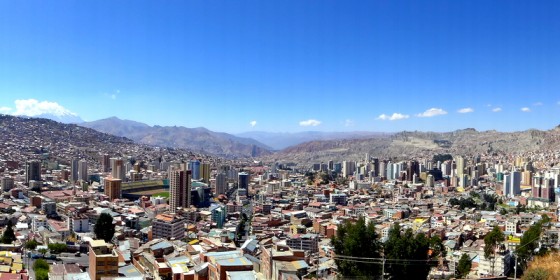
The Tilted Life in Lofty La Paz
Landing at the La Paz International Airport in El Alto leaves one breathless; the thin air is immediately manifest. At nearly 13,000 feet (4000 m), La Paz is the highest capital city in the world. The lower-altitude Sucre remains the official capital, but La Paz is the de facto power center in the country housing both the executive and legislative branches of government.
La Paz is blessed with a magnificent setting: the austere altiplano perched far above the dense construction of central La Paz, the surrounding snow-studded Andean peaks of the Cordillera Real that tower to the east, the crowning and iconic Mount Illimani (meaning “golden eagle” in the indigenous Aymara language) which soars to over 22,000 feet (6465 m).
In La Paz, nothing is level. Everything either streams downhill or slogs uphill. There is no horizontal here and consequently nothing stands still. Everything is a whirl of motion, upwards and downwards.
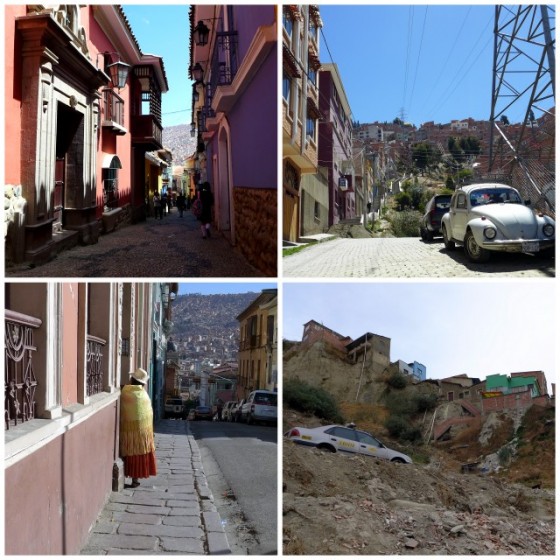
Trickle-Down Economics
So flows the relative prosperity of the La Pazians, or paceños as they are known here. Affluence increases as altitude decreases, dropping from the ever-expanding shantytowns of El Alto on the high altiplano rim and down through the dangling Aymara neighborhoods perched precariously on the steep slopes.
Below is El Centro also called la hoyada (the hole), the crowded heart of the city and home to the national government and the scant colonial remnants that survived the decades of rapid change resulting from mass migration from the countryside.
The city descends further to the upscale neighborhoods of Miraflores and Sopocachi, home of expensive apartments, a bounty of chic bars, Japanese and French restaurants, and jazz cafes.
Finally, La Paz comes to rest in the newly-minted Zona Sur neighborhood where most of the expats, diplomats and rich paceños live in gated communities. This is where the wealth of La Paz finally settles.
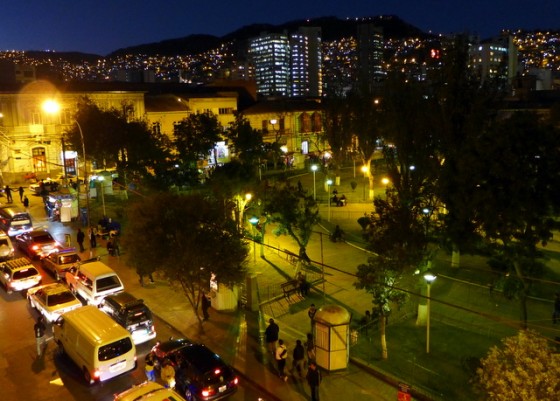
A Million Luminous Lives: Todos Somos Iguales (We Are All Equal)
Standing in the bowl of La Paz at the city center at sunset, lights shine from the buildings and homes of residents and sprawl in every direction. At night the city glimmers with all the energy of a modern metropolis, illuminating with equal intensity above and below.
This is a city of rich and poor, rural and urban, from many different indigenous backgrounds, and from all regions of Bolivia. Heterogeneous La Paz is home to Amerindians, Mestizos, Europeans, Asians and Africans. The Bolivian Constitution officially recognizes 37 languages. Bolivia, officially known as the Plurinational State of Bolivia, is indeed a multiethnic haven.
And to affirm this great diversity, La Paz recently issued an anti-discrimination ordinance and requires businesses to prominently display the following: Todos somos iguales ante la ley (“We are all equal before the law”).
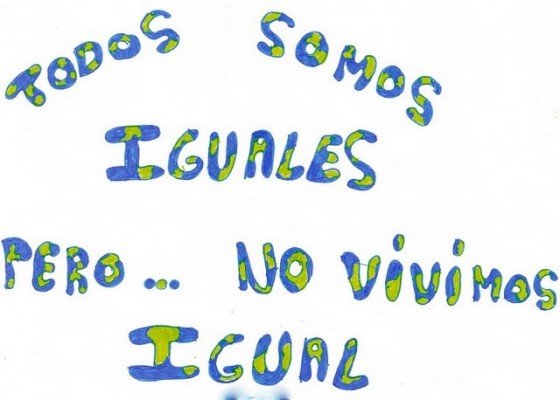
But, economically speaking, this is not so. Some paceños must work much harder than others just to scrape by. One of the poorest countries in South America, Bolivia remains a classic case of economic disparity. The most recent poverty data for Bolivia show that:
- 60% live in poverty
- 38% live in extreme poverty
- 80% have no access to electricity
- 86% have no access to running water
- 50% have no sewage system connections
Recent emphasis on poverty reduction by President Evo Morales is likely to improve the situation for millions here. Yet it will take many years through a dramatic transformation of Bolivian society and greater economic equality.
La Paz is where I begin my life in the field as a Kiva Fellow. It is among these people that I will go about my daily business, put names to faces and to lives, and learn and share as much as I can in this strikingly beautiful and imbalanced world.
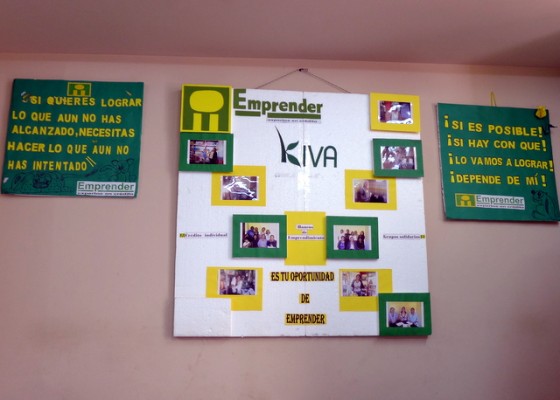
My Kiva Mission Número Uno: Borrower Verification
One of my main objectives as a Kiva Fellow is to complete the borrower verification process for two of Kiva’s microfinance partners in Bolivia. This process essentially validates that the information about borrowers and loans on the Kiva website is accurate.
With a random sample of 10 loans for each microfinance partner, I go on field visits to the loan offices and the Kiva borrowers’ homes and businesses, review loan documentation, discuss issues and status with loan officers, and conduct interviews with the borrowers themselves.
This is an important exercise for Kiva. These borrower verification reports are crucial in helping everyone at Kiva understand what is going on at ground level with the microfinance partners. It’s a singular opportunity to assess the partner’s understanding and execution of Kiva’s policies, helps find good faith errors in data or processes, and can determine areas of improvement to build a stronger relationship between Kiva and the partner.
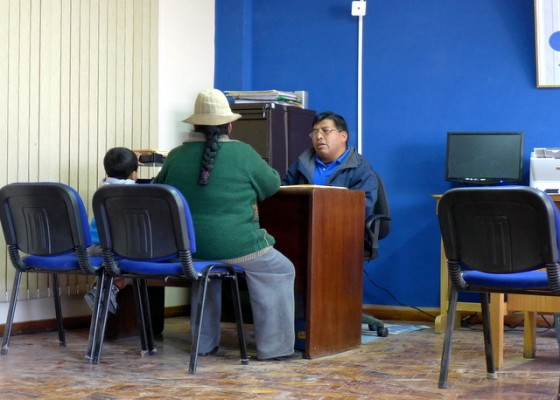
El asesor es mi copiloto: Learning to Love the Loan Officers
The loan officers I’ve worked with are remarkably companionable. Part sales people, part coaches, part financial advisers, part collection officers, part advocates – they wear different hats. In La Paz and El Alto, they spend a lot of time pounding the pavement, visiting clients to see how things are going, catching up with former loan recipients, and prospecting for new loans.
They write the borrower profiles on the Kiva website that we all read as Kiva lenders. They are the eyes and ears of the partner organization, and the ones who work most closely with clients. They work to keep the Kiva loan repayment rate at well over 99% for Emprender.
And they are my trusty companions who accompany me on verification visits to Kiva borrowers.
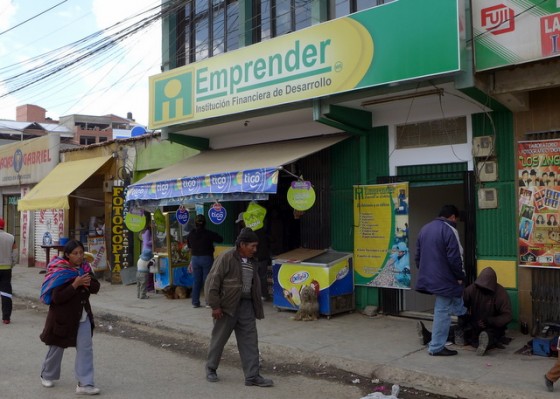
First Stop: The Microfinance Institution Loan Office
After breakfast at my small hotel in La Paz, I begin the energetic climb upwards to the Emprender office in the Villa Nuevo Potosí neighborhood. I’m glad to escape the morning chaos of central La Paz, which is teeming with people, traffic congestion, and bustling street commerce that makes the downtown sidewalks difficult to navigate.
Up here in the neighborhoods that rise steeply above the city center I find cleaner air, quiet streets, quaint homes, and pleasant corner kiosks. Locals greet me from open windows. The views of the surrounding mountains are marvelous.
I meet with Simón, the loan officer who works with the client I will be visiting. I wait patiently as he attends to an early rush of clients and examine the loan paperwork: loan disbursement, repayment schedule, the actual payments, client waiver, etc.
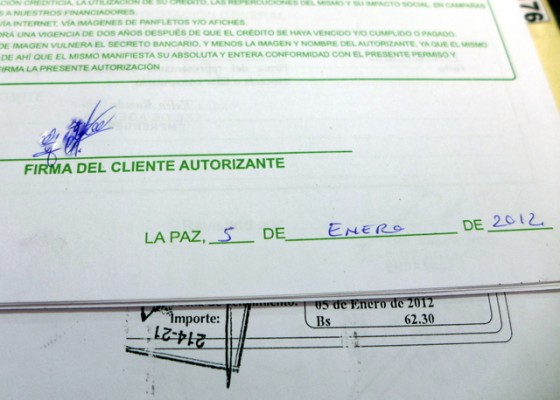
Everything is in order. I take time to review the other documents Emprender collects to approve the loan: financial evaluation, past loan review, collateral, personal references, bank statements, and so on.
The client folder is exhaustively detailed and meticulously maintained. I am learning a great deal about finance in this part of the world: utility costs, housing prices, small-business accounting records, bank interest rates, even the value of household personal items such as televisions, refrigerators and furniture.
After a quick desayuno, a daily ritual in which the entire office takes tea/coffee and bread in the break room, we set out on foot to visit the client. This is often the fastest way around the neighborhood since the meandering streets are normally jammed with traffic.
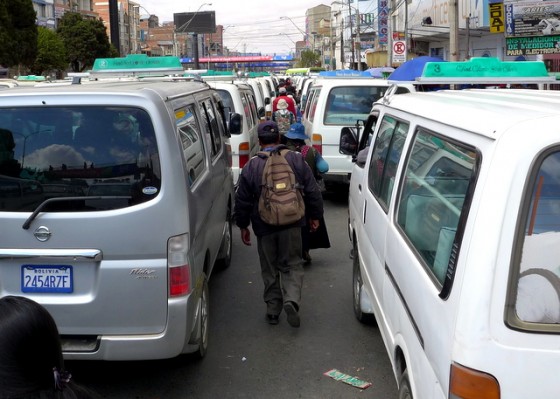
I enjoy this “commute” time with the loan officers, we talk about their daily work and their families and about my life in the United States and my work here in Bolivia. We get to know each other, and I appreciate their approachability and willingness to spend time with me despite their often full schedules.
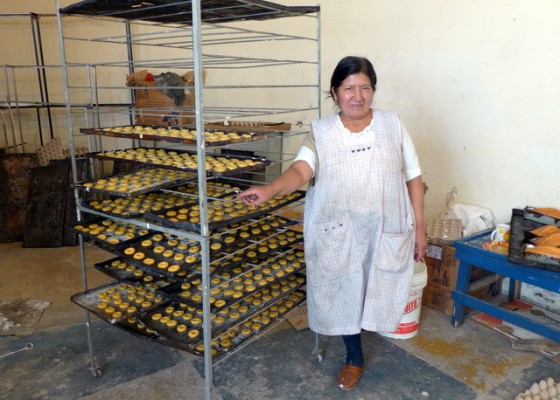
Finally, I Meet the Kiva Borrower…
Señora Celestina, the Kiva borrower, welcomes Simón and me in her home where she runs an adjacent bakery. There are racks of freshly rolled dough ready for the oven, baskets of tasty cookies and meringues ready for packaging, and piles of eggs and bags of sugar which she purchased with the help of the Kiva loan. I am happy to discuss her business and her life in such a warm and aromatic setting!
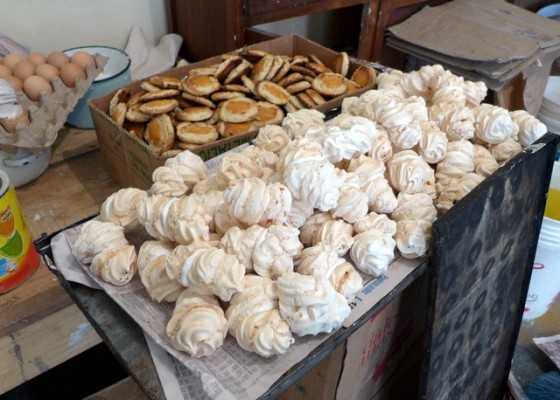
With the help of the loan officer, I explain the purpose of our visit and some more about Kiva. As we go through the verification process, Celestina readily answers all my questions and brings out the loan paperwork she has. I check that the dates and figures match and that she understands the Kiva client waiver which authorizes her information to be posted on the Kiva website. I document everything since it will be reviewed back at Kiva headquarters.
After the formal verification is complete, I chat casually with the borrower. This is usually my favorite part of the visit, the borrowers open up a bit more, we can joke about things, and I learn more about their lives and families and ambitions. On this trip, Celestina proves to be especially talkative and shares generously.
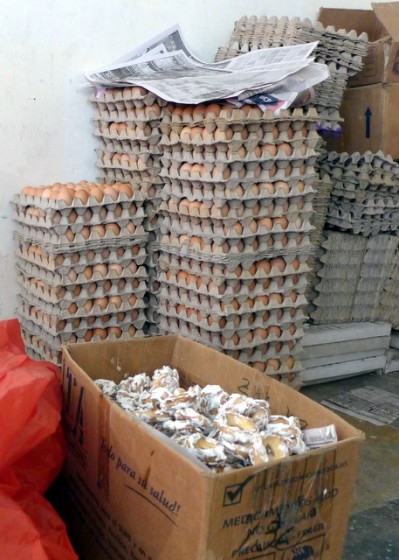
She tells me more about the success of her baking business: how she produces fairly large quantities and types of cookies for special fairs and holidays in the La Paz area. More recently she is sending these baked goods further afield and even into Peru (Cuzco and Juliaca) where festival demand is great for these delicacies.
On this particular day, Celestina is working hard for the upcoming Todos Santos (All Saints Day) celebrations in early November. Given the thousands of eggs stacked in her bakery, I know the coming weeks will keep her busy. She willingly offers me plentiful samples of her cookies, some right out of the oven, all of which are delicious and beautifully prepared.
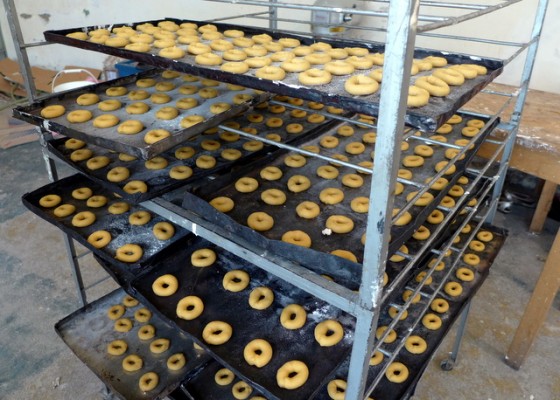
Celestina shows me her bakery, the ovens, and the piles of flour, sugar and eggs that they purchased with the loan funds. She introduces me to her ebullient husband, welcoming son and amused granddaughter. They all help her with her baking, especially during the crunch times when large festivals are fast approaching.
She is a cheerful and warm person and I greatly enjoy my time with her, but she is busy and the loan officer has other tasks ahead of him today. As we depart, Celestina speaks highly of Emprender and especially Simón, her loan officer.
We share some final laughs when she tells me (jokingly) that they all will come to the United States to start a baking company with me, naming it “Bolivian Baked Goods Company of America.” I assure them that their splendid cookies would be a hit and they thank me for my vote of confidence with handshakes, hugs and smiles.
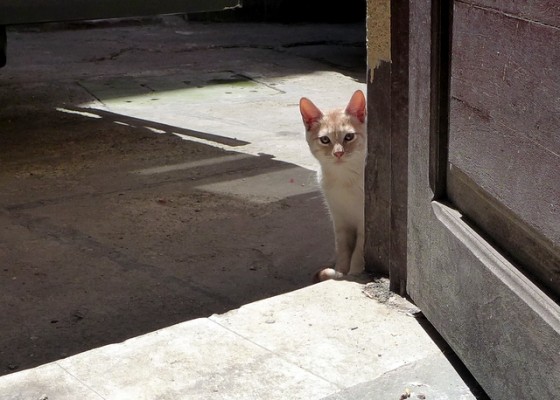
I feel wistful leaving Celestina and the elevated Villa Nuevo Potosí neighborhood, yet I am beaming inside and my feet barely touch the pavement as I descend towards downtown La Paz. It is a special privilege for me to be a part of all this, passing through doorways of private homes as welcoming locals so graciously let me into their lives for even a few moments.
Happily, I have many more clients to visit in my remaining weeks and months as a Kiva Fellow. I eagerly await my next encounters with Kiva faces and hear the extraordinary stories that shine all around me from on high in big Bolivia.
Peter Soley is a Kiva Fellow (Class 19) serving in Bolivia (La Paz, Cochabamba, Santa Cruz) with Emprender. Become a member of Emprender’s lending team, lend to one of their borrowers today, or apply to be a Fellow!
Comments
This is great, Peter. Sounds like you’re having a wonderful time!
Submitted by Holly Sarkissian on Tue, 10/16/2012 – 08:43
Thanks, Holly… off to a fun start here in Bolivia, I am just loving this so far. Now in sweaty Santa Cruz, I’ll spend the next few days on the back of a motorcycle heading into the countryside, looking forward to some Easy Rider time…
Submitted by Peter Soley on Wed, 10/17/2012 – 13:59
Great post, Peter! Makes me want to visit La Paz…and find Celestina’s bakery!
Submitted by Rose on Wed, 10/17/2012 – 18:38
Hey Rose, thanks for the encouraging words, I really enjoy reading what you’re up to in Colombia, this is really such a fantastic experience, for all of us so different and it’s great we can share via the Fellows Blog! Abrazos de Bolivia mi amiga!!!
Submitted by Peter Soley on Sun, 11/11/2012 – 05:27
You paint such a great (and honest) picture of La Paz Peter! All the best on your Bolivian adventure amigo.
Submitted by Gareth Leonard on Thu, 10/18/2012 – 11:23
hey que onda Gareth, thanks for the comment & you certainly have a unique perspective having lived here. hope all is well in guate, sounds like you’re loving life there, hard to believe we’re already a month into this great adventure, cómo vuela el tiempo
Submitted by Peter Soley on Sat, 10/20/2012 – 06:52
What a great walk through the day in the life of a Kiva Fellow. I swear I could smell the aroma of those sweet cookies baking away. What a delightful and stellar example of how your work is helping the world:) Miss you~
Submitted by Amy Richards on Sat, 11/03/2012 – 09:19
Hey Amy! Your baking would be a huge hit here in Bolivia, especially those pecan sandies! I miss you all as well, I think of you all the time & it’s a great feeling knowing I have family and friends behind me back home sending me love and support. xoxo
Submitted by Peter Soley on Sun, 11/11/2012 – 05:26
Hey Peter. Is Celestina hiring? I’ll be in the Peru area and can hike over for an interview. I love your real-life story of this entrepreneurial woman and her success. Thank you. Mom
Submitted by Susan on Sat, 11/03/2012 – 09:34
Hey mumsie, thanks for checking this out! I’d be happy to ask Sra. Celestina, she’s be a hoot to work with, very spirited. Tough work, though, long hours this time of the year with all the holidays… seems to me you’re enjoying the retired life far too much to go back to work! Can’t wait to see you in January, it will be awesome to celebrate your 70th birthday at Machu Picchu!!! xoxo
Submitted by Peter Soley on Sat, 11/03/2012 – 15:47
Right on Peter. .Beautiful stories, heartfelt love and compassion. You are truely a hero. any room for me at the bakery? xo stace- rowdy really misses you.
Submitted by stacey on Wed, 11/07/2012 – 15:36
Hey Stacey! Great to hear from you, I’m glad you can see a slice of my new world! So different from my life in Maine, but rich & rewarding in every way. I miss you too and Rowdy would love it down here, lots of friends for him to hang with in the streets! Hi to Bart!
Submitted by Peter Soley on Sun, 11/11/2012 – 05:23
Week One: Living the High Life in La Paz, Bolivia
My first week in La Paz has left me breathless. Quite literally. At nearly 12,000 feet (3600 m), La Paz is the highest capital in the world. The lower-altitude Sucre remains the official capital, but La Paz is the de facto power center in the country housing both the executive and legislative branches of government.
The magnificence of the setting is striking: the towering Andean peaks of the Cordillera Real to the east, crowned by Mount Illimani which soars to over 22,000 feet (6465 m). The dense city center flows downwards through the canon along the mostly covered Choqueyapu River.
The wealth of the residents increases as altitude decreases, from the ever-expanding shantytowns of El Alto on the high altiplano rim and down through the dangling Aymara neighborhoods perched precariously on the steep slopes.
Below is El Centro a.k.a. la hoyada (the hole), the crowded heart of the city and home to the government buildings and the scant colonial architecture that remains after decades of rapid change resulting from mass migration from rural areas.
The city sinks further to the upscale neighborhoods of Miraflores and Sopocachi, home to expensive apartments and a wealth of chic bars and restaurants.
Finally, La Paz comes to rest in the newly-minted Zona Sur neighborhood where most of the expats, diplomats and rich paceños live in gated communities.
Standing in the bowl of La Paz at the city center at sunset, millions of lights from the buildings and homes sprawl in every direction. At night the city glimmers and shines with all the energy of a modern metropolis.
This is my new home for the moment and in my first week I started to settle into the rhythms of my new world.
Below are ten morsels of my first week in La Paz.
Continue reading “Week One: Living the High Life in La Paz, Bolivia”
An Accident of Early Spring
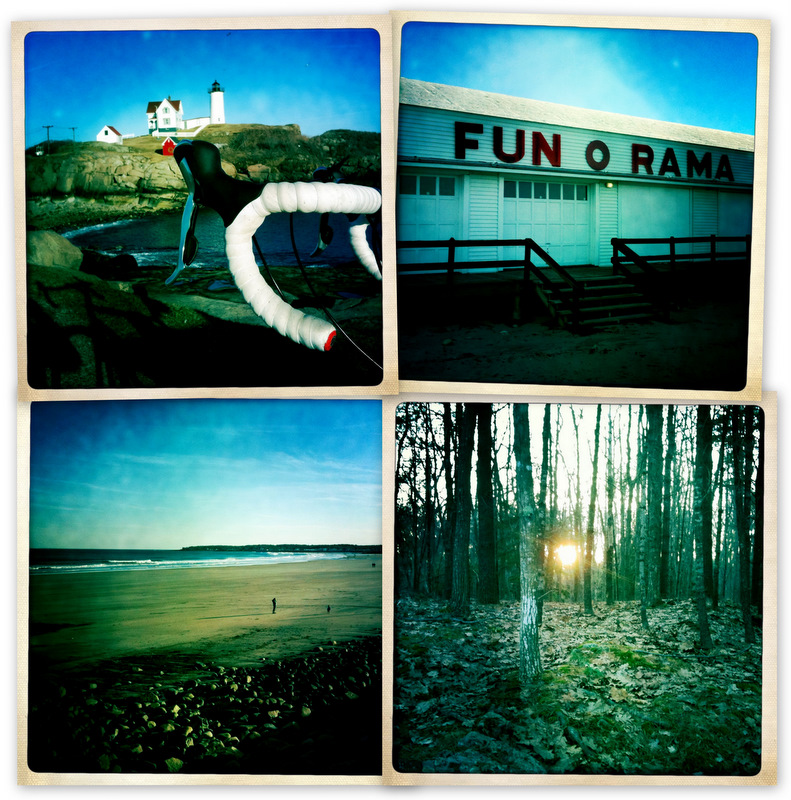
Today a gift of 66°F. One of the last moments of waning winter with the effects of a cold, snowy winter melting quickly away. This Friday afternoon: sunshine, clear skies, a balmy breeze.
So I hopped on my bike and shed work’s stressful load. I pedaled on empty roads, past patches of white tucked in the woods still reflecting the furious nor’easters of December and January. Along the estuary I saw the tide low and the sea stretching far, the salt marsh hay soaking in the surprisingly strong sun, resetting roots and working purposefully towards its gold-to-green renewal.
My mind abandons project worries and mounting tasks, tedious 10-12 hour days at my desk, my mind and body tired after months of burdensome work, little exercise and the normal winter sluggishness. Yet this spring air enlivens my lungs, my eyes and heart race to keep up with the stimuli around me, my legs straining to keep up with my unleashed spirit. No poems to read this time; my senses consume the lyrics of this rare warm afternoon and its goings-on.
Wafts of pine emerging from the brown woods, vacant roads warn and grit-strewn from the harsh cold of months past, lawns matted heavily not yet finding strength to lift its sinews upwards, the beach! oh the marvelous beach! always a sight! waves and salt air and sand and shoeless people, pant legs rolled up, arm in arm, sitting and staring, meandering dogs sniffing with eager tongues and wagging tails, puddles of melting show trickling onto the road, spritzing my bare legs as I speed over, four New York guys in a rental car with NH plates stopping to snap photos of Nubble Light, closing their eyes and faces stretching skyward, boarded up homes, silent and still but full of promise of the joys of the seasons to come, the hibernating dairy bar crowned by its unlit neon cone, “see you in the spring!” in shop windows, sounds of sawing and hammering emerging from the Liquid Dreams surf shop — first sign of life along this commercial stretch — its wave devotees getting a jump on the season, an old dog glad to have survived another winter trotting ardently away from its beckoning owner, a young couple in a white-armed embrace, their toes in the sand and bare arms absorbing each others warmth in the warmth of the sun, their shorts and polo shirts will bearing definitive creases after months folded at the bottom of a drawer, a small Latino dropping a quarter in the binoculars to get a haze-free look at distant and solitary Boon Island Light keeping watch offshore with granite strength and towering attention, diminished in stature by the miles between it and us, shirtless teenagers playing basketball their bodies pale but buffed by the sinking sun, the deserted main drag in York Beach, its store-front windows absent of the tacky t-shirts yet to debut, the taffy machine at Goldenrod Kisses covered in canvas, a lone car parked on the block that in sticky months is burdened with steady traffic, somewhere I smell fresh brick-oven pizza but I can’t place the source — not Paras and not Woody’s (both boarded still) but somewhere the locals know, the Ferris wheel at the Wild Kingdom sleeping and still, happy hour music at the Guac-n-Roll cantina welcoming the Friday happy hour (small) pre-season crowd, a young punk with a prominent mohawk holding hands with his gal and me wondering how his doo stays so erect in the gusting wind, an ambulance racing by with lights a-glow and siren a-screaming — what misfortune has befallen this fine afternoon?, bothersome bumps and cracks and potholes causing me to weave and hop along my path, construction nearing completion on the jumping bridge such a happy development since it means I can ride unobstructed this summer through the tidal marsh as Route 103 nears its end at one of my favorite stretches, my right knee straining and sore after 20 miles and facing two more over the three hills along Brave Boat Harbor Road as I approach home.
Continue reading “An Accident of Early Spring”
